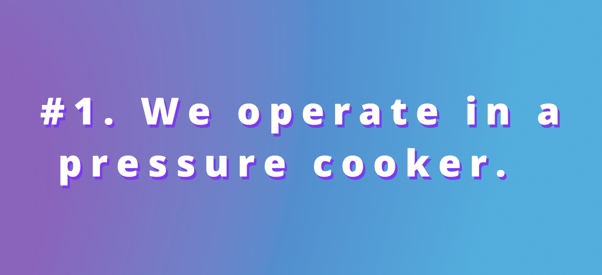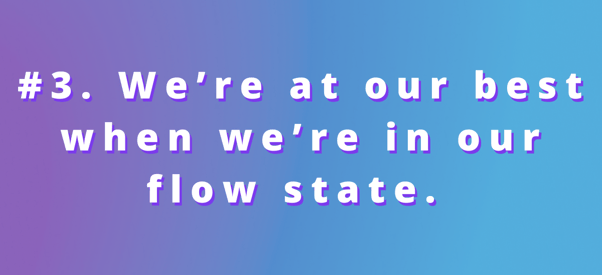.png)
Software Engineering Intelligence
-
Intelligence Engine
On-demand exhaustive AI-analysis
-
Engineering Investment
Complete visibility into time & dollars spent
-
360º Insights
Create meaningful reports and dashboards
-
Project Forecasting
Track and forecast all deliverables
DevEx
-
Developer Surveys
Create and share developer surveys
Software Capitalization
-
R&D Capitalization Reporting
Align and track development costs
Dear Engineering, we have a lot more in common than you think. Love, Sales.
Software engineering and SaaS sales teams have more a lot in common from their creativity to get the job done to their pressures to perform.

The goal is to build better alignment between the people doing the work and an understanding of our shared objectives and our roles in achieving them. To accomplish this, you must have predictability, reliability, transparency, and empathy across teams. As our founder Hersh explains, these healthy habits are all predicated on understanding: exchanging information to establish deeper knowledge of one another.
Our goal of harmonious collaboration inspired us to consider ways to deepen understanding between teams and roles actively. So we challenged ourselves to document the key aspects of our jobs that our peers across the organization should know to understand and empathize with to work together even better.
As a sales leader, I thought about how often "customer-facing" roles like sales and engineering teams can end up at odds. Understanding how each team works and their definition of success is a great starting point to building empathy and understanding. Often, engineering teams have a predefined type of work (new features, bugs, refactoring, technical debt, etc.) that all take different amounts of effort to complete. In sales, our lives are dictated by a revenue number that is largely impacted by our prospects' demands and timelines. Both roles are highly unpredictable and complex, thanks to all the external factors. In theory, these two teams should be in sync and collaborative, given they are the two ends of getting a product to market. But because these two teams are usually insulated from each other, it becomes hard to manage expectations in a constantly changing environment.
But more than anything, I realized how much emotional common ground we share in our respective roles. At the end of the exercise, I saw three areas where I knew sales and engineering could see eye to eye and swap insights to lead to a closer and more innovative working relationship.
1. We operate in a pressure cooker.
One of the hardest aspects of a sales role is the pressure to control the uncontrollable. Ultimately, we don’t directly control the product we’re selling, the marketing materials we use to sell it, or if a prospect signs on the dotted line. And yet, we’re accountable for closing sales, meeting quotas, and ensuring our company pulls in the revenue it needs to grow and flourish. Every day we think about representing our brand and colleagues with integrity, and each loss can feel like we’re letting our company down. We have to come to work ready to ride the waves of chaos and uncertainty with the understanding that our company's future is riding on our ability to get the deal done.
If you are a developer, does this sound familiar to you? It should. Just replace a few of the words and I am probably talking about your every day.
As a developer, while you have input, you have to work within both business and physical realities that can conflict with company and product visions. You are responsible for estimating work and writing code that meets the requirement in a timeline you don’t control with as few bugs as possible. The bugs you squash and the new features you ship are crucial to delivering customer value. So when something goes awry or you get pulled into other mission-critical yet unplanned work, there is another mission-critical thing that might not get done on time or to requirements. No one wants to let the team down.
The low-control, high-pressure dynamic requires a skillful balance with self-care; and our performance often depends on the physical, psychological, and emotional safety we experience in the workplace.
Here are some ways I think we can support each other:
- Let’s celebrate every win, even the small ones. New customers, new features, a crazy hard bug to reproduce. We should talk about it and celebrate it.
- Bridge the gap. Let’s create opportunities for our teams to have more opportunities to check in and ask how they are doing.
- Be gracious with losses. Learning is critical. But so is morale and momentum. I want to hear the takeaways from your retrospectives, and I’d love to share why we lost that deal so we can learn together.
- Assume positive intent. When the sales team asks for something or a project slipped, know that we are all trying our best to do the job the company needs them to do.
2. We have a lot of "soft skills" that require hardcore training.
Both roles — engineering and sales, must learn how to affect (and even change) things outside of their control, communicate status and manage expectations. Improving these interpersonal skillsets requires a heavy share of training, wisdom, and experience. We’re always fighting with one hand tied behind our back – for sales, this is part of the thrill of the profession, for engineers, maybe not so much. But as you become a more seasoned salesperson or engineer, you expect to lead and command these skillsets increases. In sales, we leverage these skillsets to guide customers to solve problems in exchange for spending significant money on a solution. In engineering, these skillsets are just as necessary when advocating for new tools or investments, architecture change, process improvements, or adjustments delivery dates.
We have to lead by influence – asking powerful questions, planting seeds for the eventual ‘aha!’ moment. In other words, sales professionals depend on skillful navigation of organizational and political dynamics. Often, that means seeing the complete picture (or the future) when a customer or stakeholder can’t. Part of crafting this whole picture to guide and influence customers and stakeholders involves connecting different parts of the business to suss out unspoken goals and biases. In addition, sales professionals translate the brand vision and product story into contexts that apply to the decision-makers to showcase the product’s benefit. Much like each line of code is responsible for adding to the overall value, each piece of the picture is necessary to achieve the desired results.
It’s tempting to think that sales is simply making calls and following a script, or engineering is just writing code to requirements. Each role needs to conduct extensive research and understand the dynamics of the environment they are working in, whether a codebase or a prospective client, to make sure we are proposing a good solution and can properly advocate for it.
3. We're at our best when we're in our flow state.
Building software is a creative endeavor mixed with technical mastery of the craft. Most would not always associate sales with a “creative endeavor.” Our jobs are also a mix of technical mastery and creativity. I view mastering the art of the sell as similar to learning to play jazz. Once you get a solid handle on the basics, the beauty is improvisation. Just like an engineer might choose a specific code language and approach for various reasons, sales reps build a unique and comfortable style of their own over time. You can tell when a representative is confidently in their flow – and you can also clearly see when they feel anxious or under undue pressure.
I think this is similar to ‘The Big Brother’ phenomenon that engineers experience with some forms of performance measurement. No engineer wants to be solely evaluated on code volume, just like no salesperson wants to be singled out for their volume of sales calls. Both sales and engineering teams need a culture of trust and accountability to access their flow and unlock productivity and innovation.
At Allstacks, we view aligning engineering teams with each other through improved visibility, predictability, and communication as critical. Through our data-driven approach, we also view Allstacks as an essential tool for aligning engineering teams with others in the organization, from sales and marketing to board members. For instance, the valuable insights gathered and provided from the value streams encourage a better understanding of feature release journeys for the go-to-market team to correctly time and plan for launch strategies. As part of the go-to-market team, this dramatically improves my team’s ability to work with our engineering teams for properly synced messaging for new customers and potential customer discussions.
Connect with me!
Connect with me on LinkedIn and get to know me better by reading my upcoming LinkedIn article. Interested in learning more about how Allstacks and our view towards software delivery insights? Check out the first real-time engineering benchmarks or learn more about value stream intelligence.



.png?width=602&name=Allstacks%20-%20Sales%202%20(1).png)
